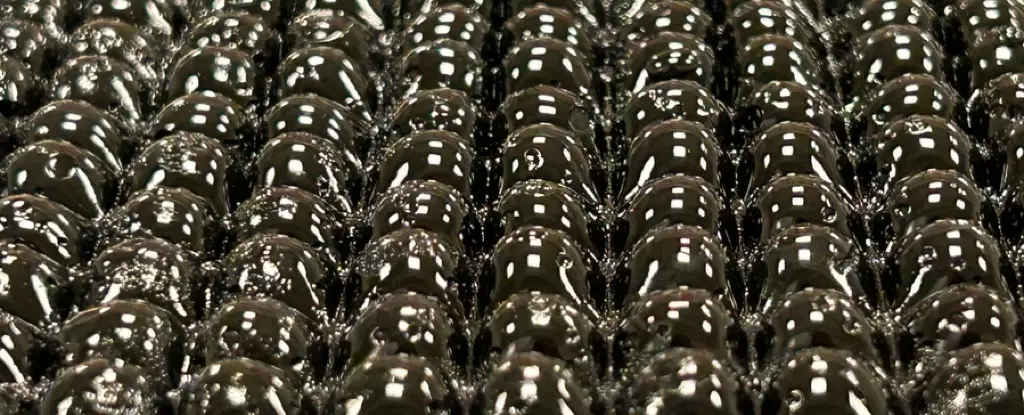In a world increasingly plagued by water scarcity, a remarkable innovation is emerging that may redefine how we access one of our most vital resources: clean drinking water. Engineers at MIT have developed an atmospheric water harvester — an extraordinary black bubble-wrap-like hydrogel panel — that passively extracts moisture from the air without any external power source. This technology, tested under the unforgiving conditions of California’s Death Valley, demonstrates not only a novel approach but also the promise of sustainability in regions where water supplies are unreliable or entirely absent. Unlike traditional water capture methods that rely on infrastructure-heavy systems or energy-intensive operations, this harvester offers quiet resilience and simplicity.
Breaking Barriers in the Harshest Environments
Death Valley is no ordinary test site — it is symbolic of the worst-case scenarios for water scarcity with its scorching temperatures and near-absence of humidity. That this new hydrogel manages to pull more than 50 milliliters of potable water from the dry air daily here is nothing short of astounding. While milliliters may seem modest at first glance, the scalability and replicable nature of such technology are where the true potential lies. Given that billions worldwide lack dependable water access, even incremental improvements can lead to significant, life-saving changes. The material’s ingenious design elevates its efficacy: a matrix of polyvinyl alcohol, lithium chloride, glycerol, and carbon black ink crafted into microbubble structures maximizes surface contact with atmospheric moisture while binding the water-attracting chemicals safely within.
Material Science Meets Practicality
What makes this innovation impressive is its thoughtful material composition. Lithium chloride within the hydrogel functions as a hygroscopic agent—pulling moisture from the ambient air—but this has traditionally created issues with chemical leaching and contamination. This design circumvents such pitfalls by embedding the salts inside a gel whose microstructure prevents leakage. Glycerol acts as a stabilizing agent, further ensuring the material’s safety and durability. The black coloring, beyond aesthetics, contributes to thermal management by absorbing sunlight and thereby facilitating water condensation on cooler glass covers layered over the hydrogel. The gravity-driven collection system harkens back to basic physics rather than complex machinery, highlighting the team’s commitment to creating water solutions for resource-limited settings.
Optimism Tempered by Realistic Challenges
Despite its undeniable promise, there is a sobering reality to the implementation of such technology worldwide. We cannot overlook the critical hurdles related to mass production, cost, distribution, and long-term maintenance in the very areas where this technology could have the most impact. The MIT team is upfront about these challenges, positioning the current device as a “proof-of-concept” rather than a finished product. The fact that it operates without electricity is both an advantage and a challenge—it must work reliably in remote regions with minimal technical support while competing against established water access methods, some of which are politically and economically entrenched.
Moreover, the reliance on lithium chloride, a chemical tied to controversial mining practices, demands scrutiny. There’s an ethical urgency to ensure that the materials sourcing aligns with environmental and social responsibility. While the innovation signals a step toward decentralized water access, we must be vigilant that it doesn’t inadvertently create new dependencies or environmental harms.
A Vision for Decentralized Water Equity
What resonates most about this atmospheric water harvester is its alignment with a broader vision of water democratization. Large-scale, centralized water infrastructure too often ignores marginalized and rural communities, creating systemic inequalities. A solution that is portable, scalable, and energy-free could redefine how water equity is achieved globally. However, this reimagining requires more than just technological innovation—it necessitates deliberate policy frameworks, investment, community involvement, and transparency in the manufacturing supply chain.
Certainly, the hydrogel bubble wrap exemplifies the kind of visionary science we need to address escalating environmental crises without exacerbating existing inequities. It embodies a synergy between cutting-edge material science and practical necessity, offering a glimpse at sustainable technology that sidesteps the conventional energy dependence that limits many current water solutions. Yet, the road to truly transformative water security is winding, demanding continued innovation paired with ethical diligence and cross-sector collaboration.



Leave a Reply